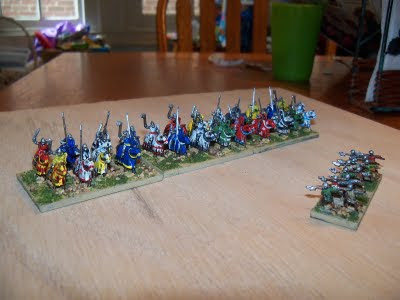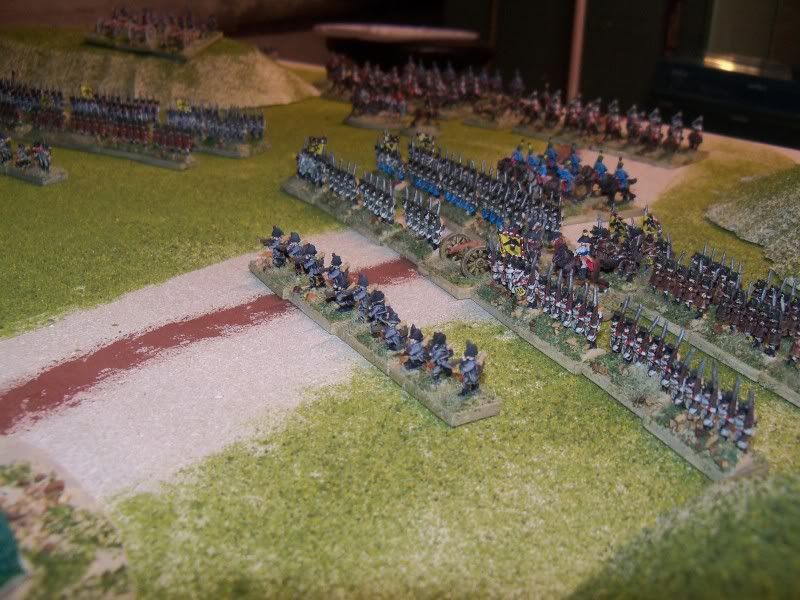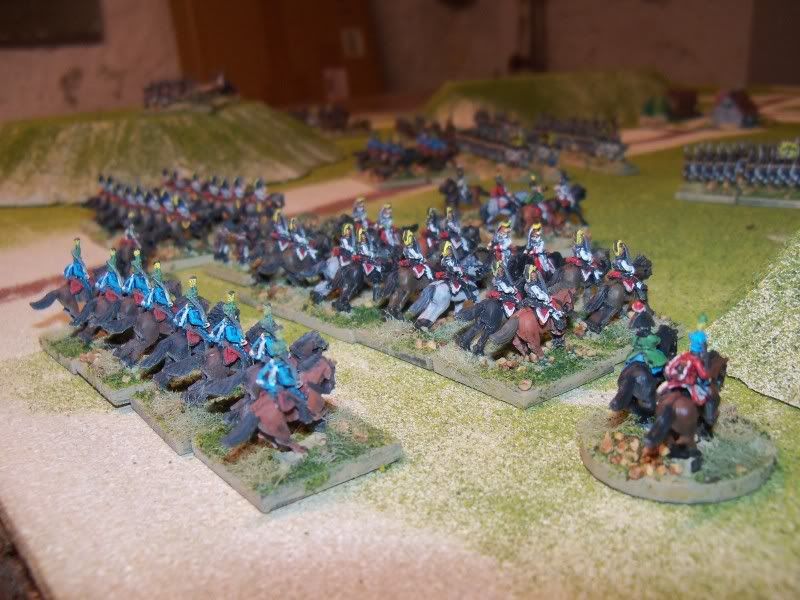Now that I have a substantial number of 10mm Napoleonics painted, I'm ready to try out the rules I wrote in a preliminary playtest battle (not yet ready for human consumption).
On the French side, I have three infantry brigades in a strong division with supporting artillery. One of the brigades consists of Bavarians. I've always had a soft spot for Bavarians, so it is with regret that I rated them "inferior" for this battle. The French also have two brigades of cavalry, one of chevaux-legeres and one of dragoons.
The Austrians have three strong infantry brigades. Two of them have a high proportion of landwehr troops. All have supporting cavalry and artillery, making each a well-balanced force. The Austrians also have a small brigade of dragoons.
I assigned each brigade on each side a sequantial playing card, red for French and black for Austrians.
As always, click the photos to see the bits that Blogspot cropped off for your protection.
Then I placed five sequential red cards (the Ace through five of diamonds) face up on the French edge of the board (I'm playing for the French side). Then placed six sequential black cards (the Ace through six of clubs) face down on the board on the Austrian edge. In other words, two of the Austrian 'brigades' were dummies which I would not find until they came within 12" of one of my cards.
Each side alternated moving cards. There were no terrain limits, and a player could elect to move the same card on consecutive turns. When cards came within 12" of each other, both were revealed. The moving player deployed the brigade in question first, followed by the other player. If the Austrians revealed a dummy, the French still had to deploy.
Here is the situation after the first four brigades have been revealed. The Austrian Dragoons wound up in the center, facing some French infantry on the far bank of a shallow river. Two other infantry brigades face each other across an important crossroads.
Here is the situation at the end of deployment. The French right looks particularly weak, as the Bavarians were revealed far from the action, so they were strung out in a road column. However, since the Austrians had more cards to move into deployment, they were able to maneuver into a flanking position. If they can get across the river quickly, the Bavarians are in deep doo-doo.
On the French left, the two cavalry brigades faces a single Austrian infantry brigade. The French have placed their heavy artillery in support, however, so if the Austrians respond by going into square, their own flank may end up being vulnerable.
































